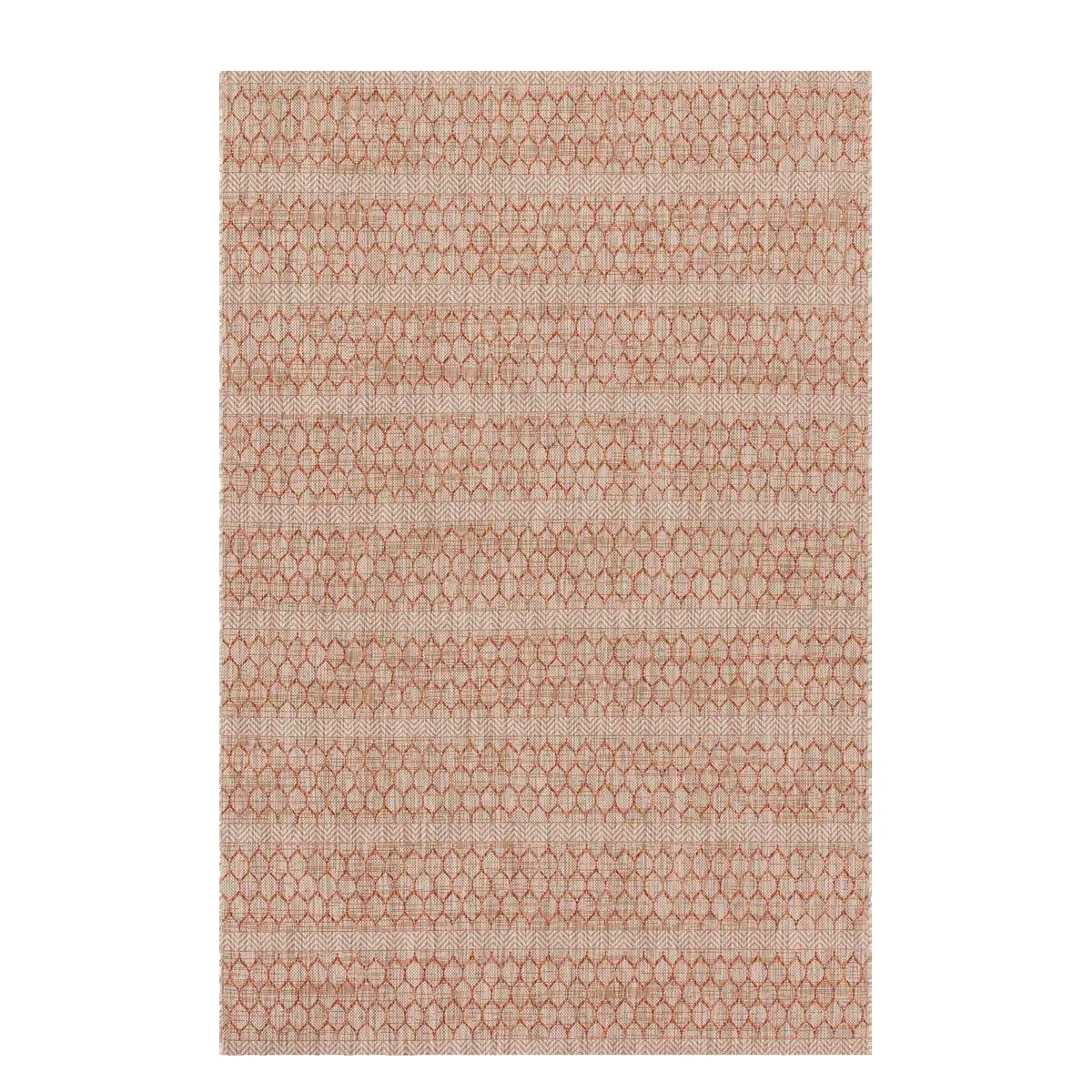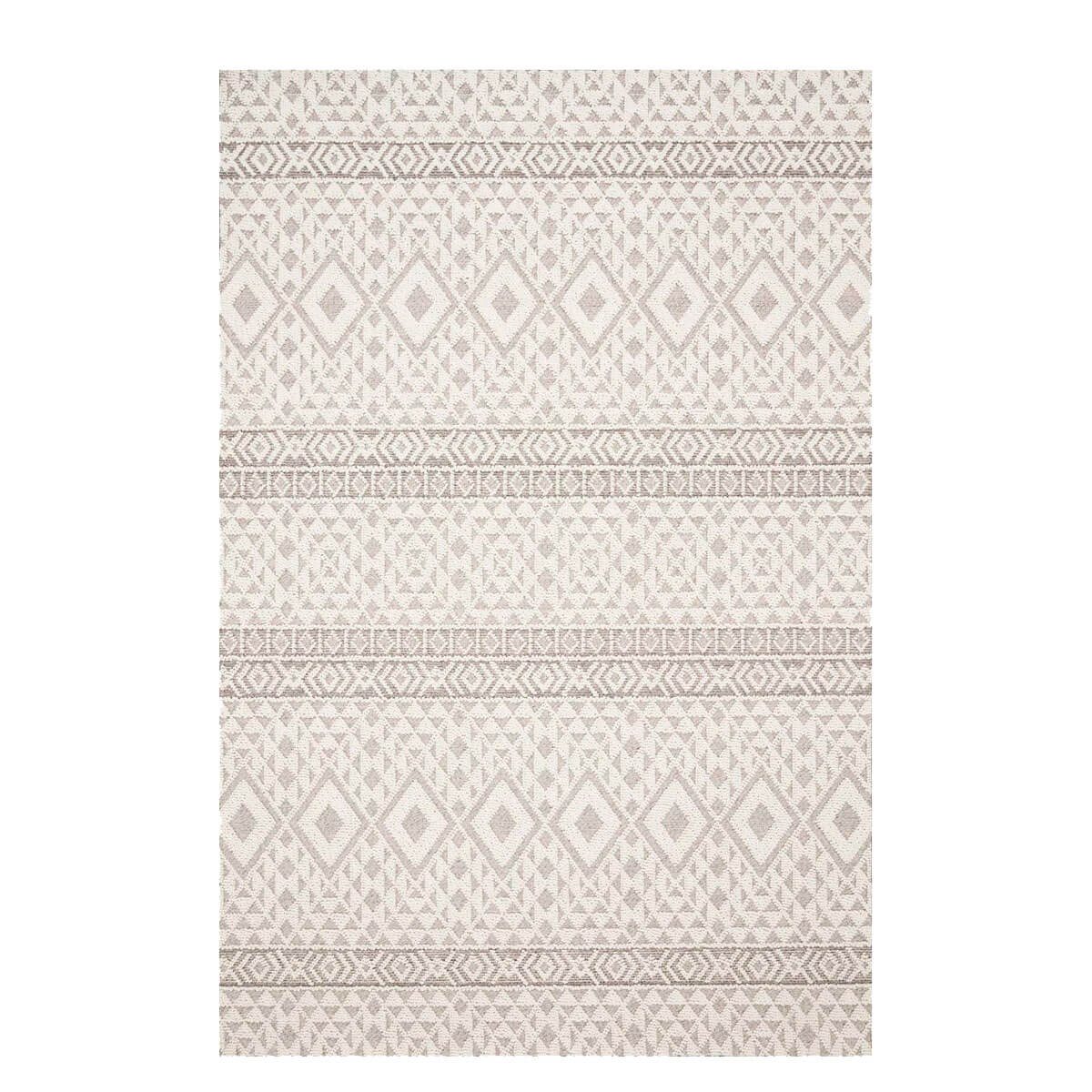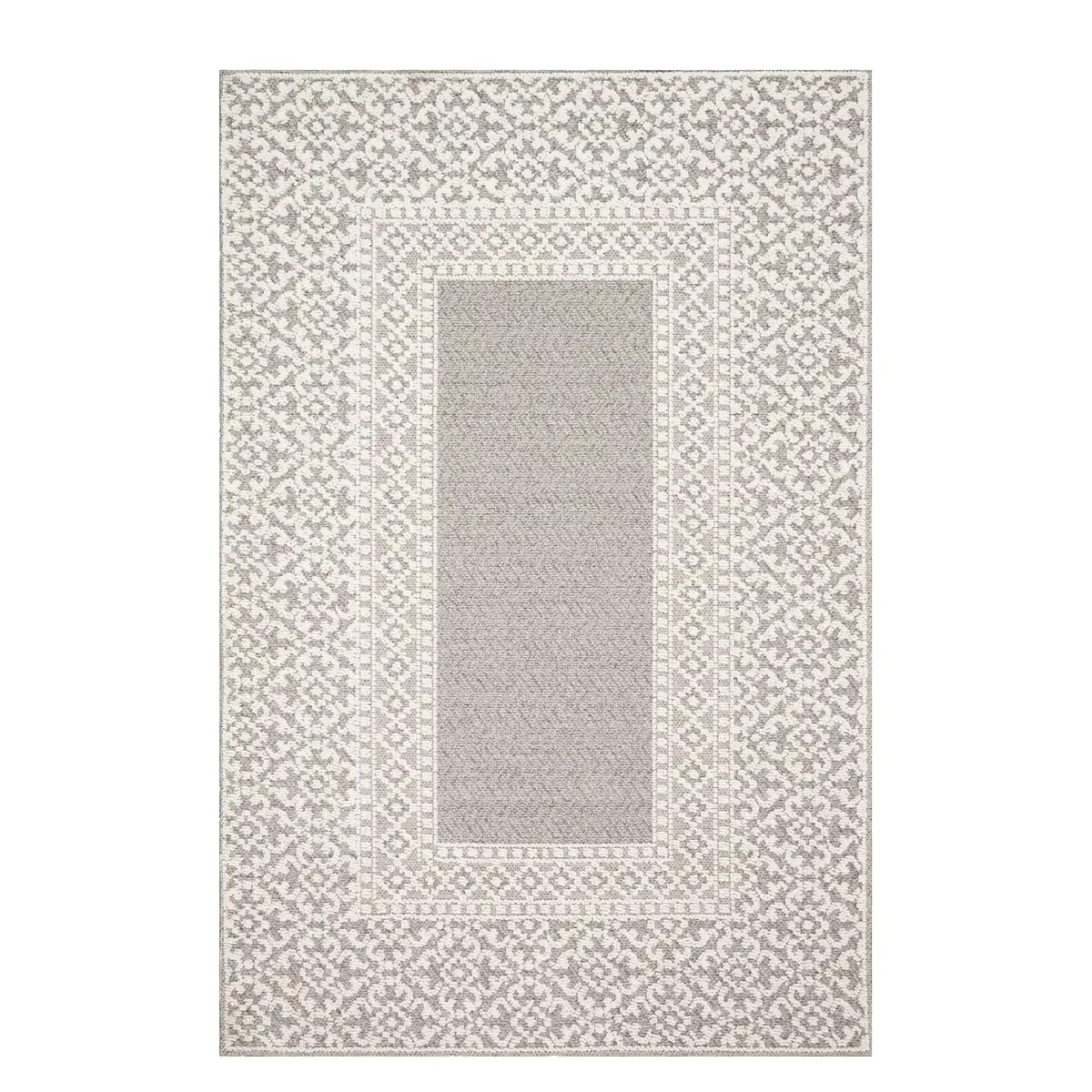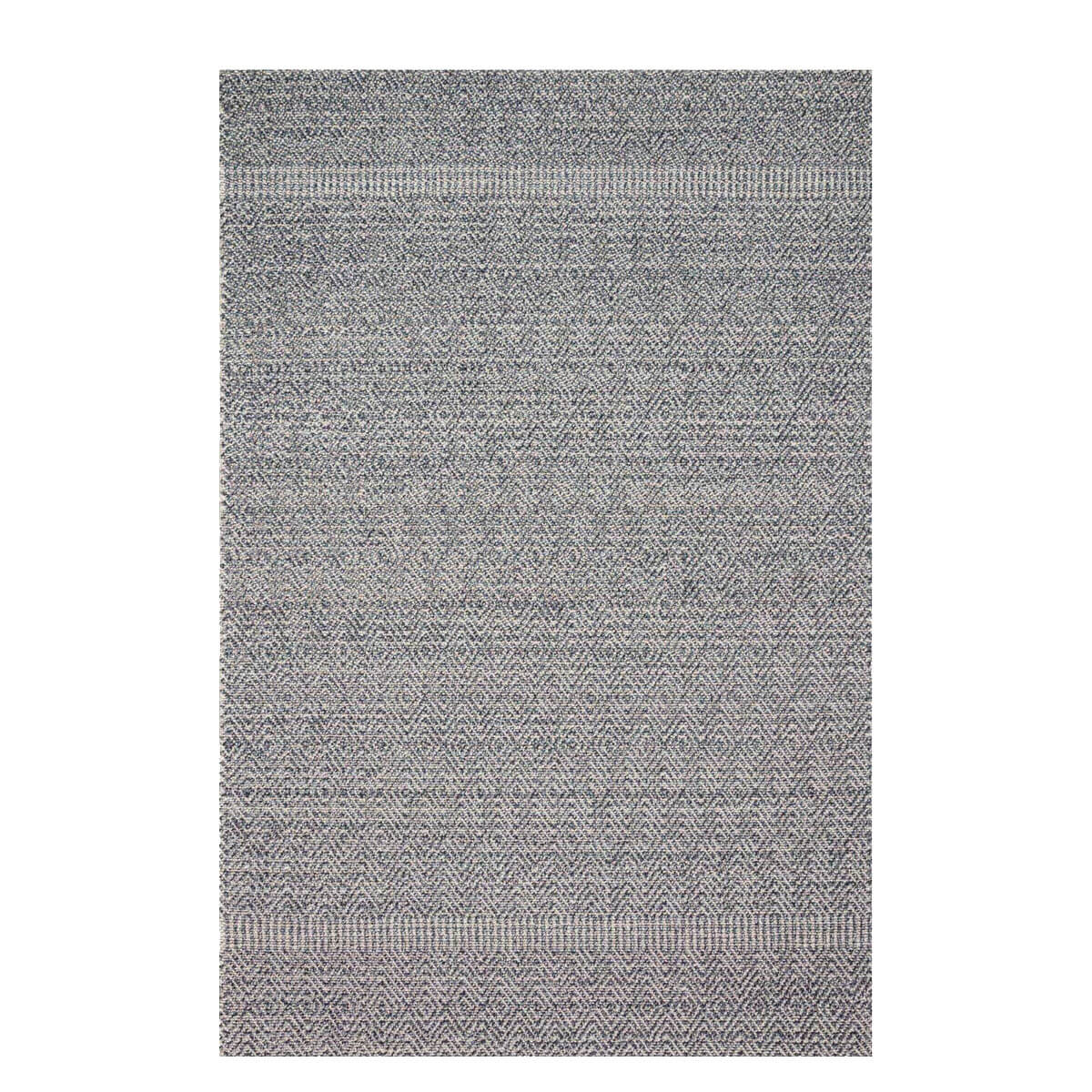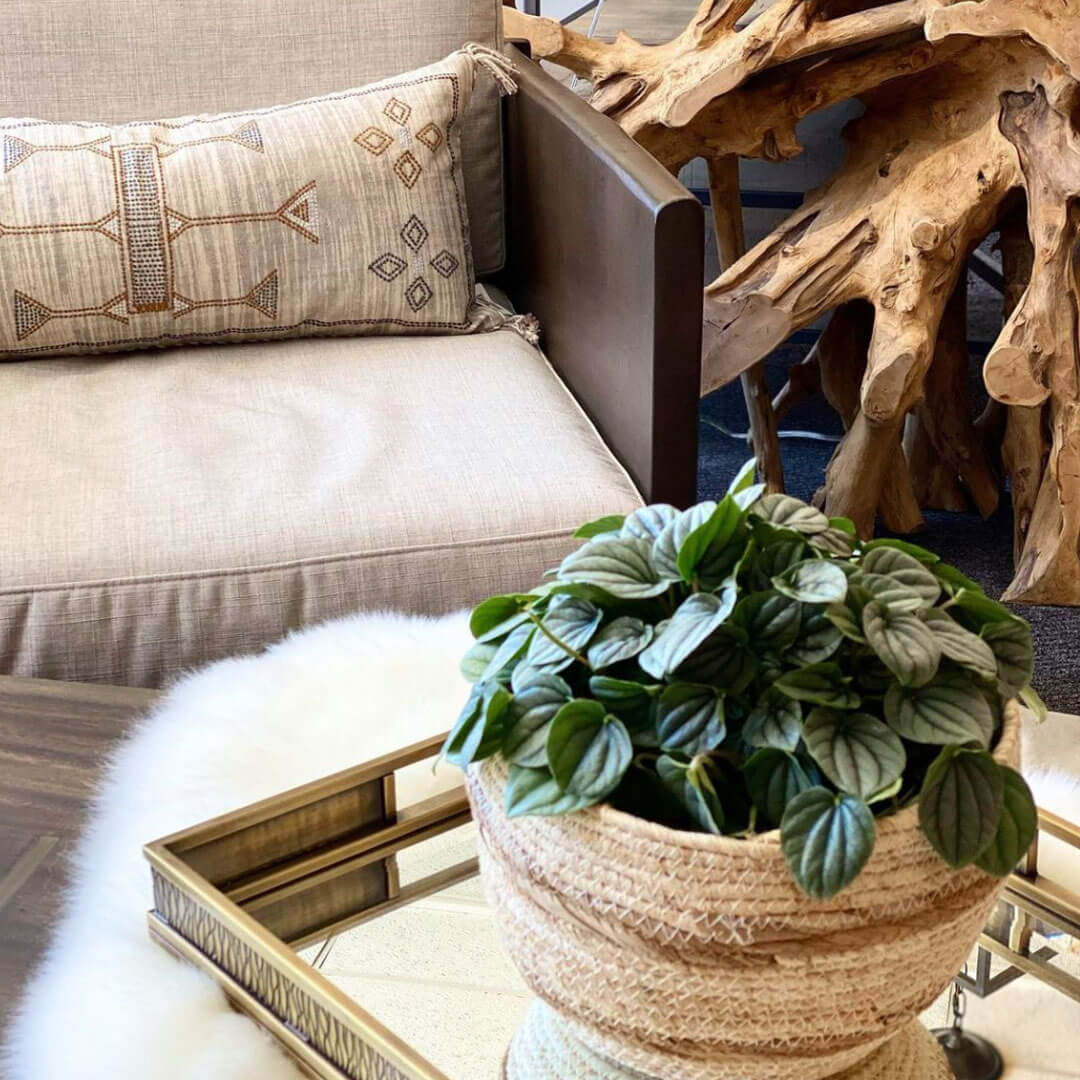Product Care Guide for Outdoor Rugs
Outdoor rugs are a great way to add style and comfort to your patio or deck, and they generally require little maintenance. Synthetic rugs are non-porous making them stain-resistant and ideal for outdoor spaces. These rugs are designed to dry quickly, resist fading, and clean easily. However, to get the most life out of your outdoor area rug it pays to learn how to maintain it. Begin by reading the care instructions that came with your rug. Each manufacturer has their own instructions for cleaning a rug based on the materials and the construction. Then follow the tips and suggestions outlined in this article to help keep your rug looking fresh and beautiful!
Here are the broad steps to understand for how to clean an outdoor rug and keep it looking great.
- Know your rug’s materials
- Determine the amount of traffic it will bear
- Choose the right rug pad for an outdoor rug
- Prevent damage whenever possible
- Use proper cleaning methods & storage

Rug Material
The material that your rug is made of determines how you will need to clean it. There are a number of materials that are common for outdoor rugs, including acrylic, bamboo, nylon, polyester, polypropylene and sisal. Each of these materials have their own set of advantages, but keep in mind these rugs are designed to be outside, so the materials used generally won’t be as plush as indoor rugs. Instead, the materials will be tougher and better prepared for the often extreme elements of the outdoors.
Most outdoor rugs are made of either synthetic or natural materials. Synthetic materials tend to be bright in color, lightweight, quick to dry and can tolerate getting wet. Natural rugs are generally have a great texture and durability, but should not be exposed to as much moisture as synthetic materials. Look for a tag on the rug to disclose what it is made of. If you don’t find a tag and don’t know what the material is, don’t worry too much about it. The primary concern will be how long the rug remains moist.
Traffic and Location
Where you place your rug outdoors largely determines how long it will last. If the rug gets walked across often or is directly in the sun, depending on the material it is made of, it be harder to keep it looking nice. If your rug sits out on a patio or deck that is constantly moist, this is another placement and condition leading to a rug wearing out sooner than it should.
To keep it looking new and easier to clean, consider placing your outdoor rug in a lower-traffic area that generally stays dry. This doesn’t mean that your rug can’t see any foot traffic, but keeping it away from areas that see heavy traffic is not a bad idea. On the other hand, if you do need a rug in a high traffic area, consider using one made of a more durable material such a sisal.
Rug Pads
Just as you do for an indoor rug, using a rug pad will help keep your outdoor rug looking better for a much longer time. A rug pad plays a crucial role in keeping the rug in place and protects the surface beneath the rug. Just as the different rug materials available offer specific benefits, different types of rug pads with provide diverse benefits. Whichever type you use, keep in mind that the pad needs to be waterproof (weatherproof).
- A thick pad with a rubber tread is the highest quality you can use as it provides by grip and cushioning.
- A felt pad is also thick and protects a surface from dirt but does not provide grip.
- A waffle pad is made of rubber material and is thin and soft. While it is less expensive and prevents skidding, it provides minimal cushioning and protection.
Preventing Damage
A large part of ensuring that your outdoor rug will last is to take certain measures that can help prevent damage in the first place. As mentioned above, the location of the rug will play a large role, but there are steps you can take to help protect and preserve your rug. If you decide to roll-up and store away the rug during cold or wet months, we suggest you cover or wrap it with a lightweight fabric to allow it to breathe while also adding an extra layer of protection from insects or pests. This is particularly so for sisal rugs.
- Clean spills as soon as they happen.
- Prevent dirt, dust or mildew build-up.
- Keep an eye out for insects or other pests.
- Store the rug in a dry area when it’s cold and snowy.
Cleaning Methods
To prolong the life of your rug, it’s not only important that it be cleaned frequently to prevent mildew or excessive dirt from accumulating, it is also important to have a solid understanding of how each type of material should or should not be cleaned and stored. Here are a few techniques to keep in mind. Before following these instructions, look at the care directions on the rug to make sure you are maintaining it in the right way. Not all rugs can get wet or be cleaned with bleach, so always be positive about the care instructions before you proceed.
- Disinfect — Using diluted bleach can help you remove algae, mildew or mold that may have accumulated. A more natural cleaner would be to use diluted vinegar, but don’t ever mix bleach and vinegar together. Also, check the label on your rug to make sure the material can handle diluted bleach.
- Blot, Never Scrub — No matter what type of cleaning mixture you are using, always use a blotting technique to remove stains. When you scrub, stains are pushed deeper into the rug, making it far more difficult to fully remove them.
- Hose It Down — Use your garden hose to spray off your outdoor rug. This will quickly remove larger items. Depending on its location and local temperature, we suggest you hang dry the rug to ensure that all moisture is removed.
- Scrape It: Being out in the elements, it is quite common for dirt, mud, and other debris get stuck in the fibers of your outdoor rug. Try using a dull putty knife or some sort of scraper to gently break apart and remove large pieces of dirt or debris.
- Spot Treat: Tough stains generally need to be spot-cleaned. Depending on the material, you can use warm soapy water or some other cleaner. This is another instance where hanging your rug to dry will help to prevent mildew from forming.
- Shake it Out: Regularly shaking out your outdoor rugs is a simple way to remove dirt. The longer dirt is left in the rug, the more likely it will be harder to clean, perhaps even damaging it prematurely.
- Sweep Above and Below: Cleaning the top of your rug with a broom is obvious, but you should also sweep the ground beneath your rug. This will help remove dirt and mildew, and possibly insects, from causing damage.
- Vacuum It: Another quick way to clean your outdoor rug is to vacuum it. You can use a regular vacuum cleaner, but we suggest using a shop vac as it is more durable.
Add Mountain Modern Styling to Your Home!
Whether you live near the Tetons or just dreaming of a home with a view of the mountains, elevate your living with a consultation from our team of experienced designers. The heartbeat of our design firm and online shoppe is to work with your personal style to curate your unique dream home.



